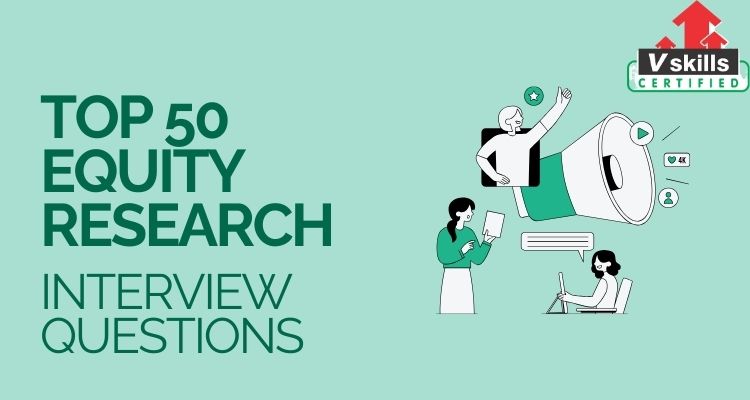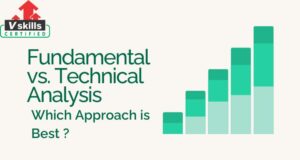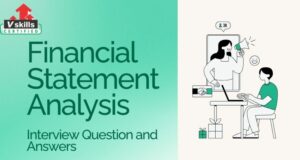In the world of finance, Equity Research holds a vital role in providing insights into stock market trends and investment opportunities. As you prepare for your Equity Research interviews, it’s crucial to understand the industry’s dynamics and be well-prepared to answer a range of questions. This guide aims to equip you not only with answers but also with a profound understanding of Equity Research principles. By mastering these questions, you’ll not only confidently navigate interviews but also enhance your ability to analyze stocks effectively, identify investment potentials, and contribute meaningfully to the financial sector.
Equity Research Basics
Question 1: What is the primary purpose of equity research?
A) Analyzing real estate markets.
B) Recommending fashion trends.
C) Providing insights to investors about company performance.
D) Predicting weather patterns.
Answer: C) Providing insights to investors about company performance.
Explanation: Equity research aims to analyze companies’ financial performance and provide valuable insights and recommendations to investors, helping them make informed decisions about investing in stocks.
Question 2: What is the key purpose of an equity research report?
A) Sharing personal opinions.
B) Promoting company products.
C) Informing investors about company analysis and recommendations.
D) Discussing political ideologies.
Answer: C) Informing investors about company analysis and recommendations.
Explanation: An equity research report is designed to provide investors with a comprehensive analysis of a company’s financials, industry trends, and investment recommendations, enabling them to make educated investment decisions.
Question 3: What is the role of a sell-side analyst?
A) Managing investment portfolios.
B) Providing research to clients and generating trading commissions.
C) Handling customer service inquiries.
D) Analyzing environmental impact reports.
Answer: B) Providing research to clients and generating trading commissions.
Explanation: A sell-side analyst works for brokerage firms or investment banks, offering research and analysis to clients. This research can lead to trading activity, generating commissions for the firm.
Question 4: What concept is assessed to determine a company’s competitive advantage?
A) Market share analysis.
B) Profit margin ratio.
C) Competitive disadvantage.
D) Moat analysis.
Answer: D) Moat analysis.
Explanation: A company’s competitive advantage, often referred to as its “moat,” is evaluated to understand how well it can maintain profitability and fend off competitors. This involves analyzing factors that give the company a lasting edge.
Question 5: What does DCF stand for in equity research?
A) Discounted Company Finance.
B) Dynamic Cash Flow.
C) Discounted Cash Flow.
D) Diversified Capital Funds.
Answer: C) Discounted Cash Flow.
Explanation: DCF stands for “Discounted Cash Flow.” It’s a valuation method used to estimate the present value of a company’s future cash flows, incorporating the time value of money.
Financial Analysis and Ratios
Question 1: Which ratio assesses a company’s short-term liquidity?
A) Debt-to-Equity ratio.
B) Price-to-Earnings ratio.
C) Return on Equity ratio.
D) Current ratio.
Answer: D) Current ratio.
Explanation: The current ratio measures a company’s ability to cover short-term liabilities with its short-term assets, indicating its liquidity and ability to meet immediate obligations.
Question 2: What does the P/E ratio stand for?
A) Profit to Expense ratio.
B) Price to Earnings ratio.
C) Portfolio to Equity ratio.
D) Performance to Efficiency ratio.
Answer: B) Price to Earnings ratio.
Explanation: The P/E ratio, or the Price to Earnings ratio, reflects the market price of a share relative to its earnings per share (EPS). It’s used to assess a company’s valuation compared to its earnings.
Question 3: What does the Debt-to-Equity ratio measure?
A) Company profitability.
B) Short-term liquidity.
C) Financial leverage.
D) Market capitalization.
Answer: C) Financial leverage.
Explanation: The Debt-to-Equity ratio compares a company’s total debt to its shareholder equity, indicating the level of financial leverage it employs.
Question 4: What does ROE stand for in finance?
A) Return on Expenses.
B) Revenue Over Equity.
C) Return on Efficiency.
D) Return on Equity.
Answer: D) Return on Equity.
Explanation: ROE stands for “Return on Equity.” It measures a company’s profitability by calculating how much profit it generates relative to the equity invested by shareholders.
Question 5: What does the EBIT margin indicate?
A) Operating profitability.
B) Total asset turnover.
C) Debt coverage ratio.
D) Inventory turnover.
Answer: A) Operating profitability.
Explanation: The EBIT margin, or Earnings Before Interest and Taxes margin, represents a company’s operating profitability by indicating how much operating earnings it generates for each dollar of revenue.
Valuation Methods
Question 1: What is the purpose of a Discount Rate in valuation?
A) To reduce future cash flows.
B) To increase the present value of cash flows.
C) To discount future cash flows to present value.
D) To calculate tax liabilities.
Answer: C) To discount future cash flows to present value.
Explanation: The Discount Rate is used to discount future cash flows back to their present value, considering the time value of money and risk factors.
Question 2: What is the primary difference between DCF and CCA?
A) DCF values companies based on comparables.
B) CCA is forward-looking, while DCF is relative.
C) CCA uses projected cash flows, while DCF uses valuation multiples.
D) DCF is a relative valuation method.
Answer: B) CCA is forward-looking, while DCF is relative.
Explanation: DCF (Discounted Cash Flow) is based on projected cash flows and is forward-looking, while CCA (Comparable Company Analysis) uses valuation multiples of similar companies to assess valuation.
Question 3: How can you value a company with negative cash flows?
A) Use the DCF method only.
B) Use the CCA method only.
C) Use both DCF and CCA methods.
D) You cannot value a company with negative cash flows.
Answer: C) Use both DCF and CCA methods.
Explanation: Valuing a company with negative cash flows can involve using both DCF and CCA methods, and potentially considering future positive cash flows once the company becomes profitable.
Industry Analysis
Question 1: What is Porter’s Five Forces framework used for?
A) Predicting stock market trends.
B) Analyzing industry competition and attractiveness.
C) Assessing consumer preferences.
D) Evaluating political stability.
Answer: B) Analyzing industry competition and attractiveness.
Explanation: Porter’s Five Forces framework is used to analyze the competitive forces within an industry, helping assess its attractiveness and the potential profitability for companies within it.
Question 2: Which stage of the industry life cycle involves rapid growth?
A) Introduction.
B) Maturity.
C) Decline.
D) Growth.
Answer: D) Growth.
Explanation: The Growth stage of the industry life cycle is characterized by rapid expansion and increasing demand for products or services within the industry.
Domain 5 – Economic and Market Analysis
Question 1: How can macroeconomic factors impact a company’s performance?
A) They have no effect on a company’s performance.
B) They influence costs and profitability.
C) They only impact customer service.
D) They affect stock market holidays.
Answer: B) They influence costs and profitability.
Explanation: Macroeconomic factors such as interest rates, inflation, and GDP growth can impact a company’s costs, revenue, and overall profitability.
Question 2: What characterizes a bear market?
A) Rising stock prices and optimism.
B) Falling stock prices and pessimism.
C) Stable stock prices and caution.
D) Fluctuating stock prices and uncertainty.
Answer: B) Falling stock prices and pessimism.
Explanation: A bear market is marked by a prolonged period of falling stock prices and negative investor sentiment.
Financial Statements and Analysis
Question 1: What does the Income Statement primarily show?
A) Cash flow for the period.
B) Assets and liabilities at a specific point in time.
C) Financial position at the end of the year.
D) Revenues, expenses, and net income for a specific period.
Answer: D) Revenues, expenses, and net income for a specific period.
Explanation: The Income Statement, also known as the Profit and Loss Statement, displays a company’s revenues, expenses, and net income for a specific period, indicating its financial performance.
Question 2: What is the purpose of the Balance Sheet?
A) To show revenues and expenses.
B) To display changes in equity.
C) To summarize cash flows.
D) To present assets, liabilities, and equity at a specific point in time.
Answer: D) To present assets, liabilities, and equity at a specific point in time.
Explanation: The Balance Sheet provides a snapshot of a company’s financial position by listing its assets, liabilities, and equity at a specific moment, helping assess its financial health.
Question 3: How does the Cash Flow Statement differ from the Income Statement?
A) The Cash Flow Statement shows cash inflows and outflows, while the Income Statement shows net income.
B) The Cash Flow Statement displays net income, while the Income Statement shows cash flows.
C) The Cash Flow Statement focuses on expenses, while the Income Statement focuses on revenues.
D) The Cash Flow Statement summarizes assets and liabilities, while the Income Statement focuses on equity.
Answer: A) The Cash Flow Statement shows cash inflows and outflows, while the Income Statement shows net income.
Explanation: The Cash Flow Statement details cash inflows and outflows over a period, including operating, investing, and financing activities. The Income Statement, on the other hand, primarily shows revenues, expenses, and net income.
Question 4: What does the Operating Cash Flow ratio assess?
A) Company profitability.
B) Liquidity and ability to meet short-term obligations.
C) Capital structure.
D) Asset turnover.
Answer: B) Liquidity and ability to meet short-term obligations.
Explanation: The Operating Cash Flow ratio evaluates a company’s ability to generate enough cash from its operations to meet short-term obligations, indicating its liquidity.
Question 5: What is the significance of the Gross Profit Margin?
A) It indicates a company’s ability to cover interest payments.
B) It shows the proportion of net income to total revenue.
C) It reflects the proportion of gross profit to total revenue.
D) It demonstrates a company’s ability to cover operating expenses.
Answer: C) It reflects the proportion of gross profit to total revenue.
Explanation: The Gross Profit Margin indicates the percentage of gross profit relative to total revenue, highlighting the portion of revenue that covers production costs.
Risk and Return
Question 1: How is systematic risk also known?
A) Non-diversifiable risk.
B) Unsystematic risk.
C) Unique risk.
D) Specific risk.
Answer: A) Non-diversifiable risk.
Explanation: Systematic risk, also known as non-diversifiable risk, refers to risks that affect the entire market and cannot be eliminated through diversification.
Question 2: Which type of risk can be reduced through diversification?
A) Systematic risk.
B) Market risk.
C) Unsystematic risk.
D) Interest rate risk.
Answer: C) Unsystematic risk.
Explanation: Unsystematic risk, also known as specific risk or diversifiable risk, can be reduced through diversification by holding a diversified portfolio of assets.
Question 3: How is the risk-free rate typically determined?
A) Based on the average market return.
B) Set by government policies.
C) Calculated using the company’s cost of equity.
D) Determined by industry benchmarks.
Answer: B) Set by government policies.
Explanation: The risk-free rate is typically determined by government policies, often represented by the yield on a government bond with minimal default risk.
Question 4: What does the Capital Asset Pricing Model (CAPM) help determine?
A) Market risk premium.
B) Unsystematic risk.
C) Interest rates.
D) Currency exchange rates.
Answer: A) Market risk premium.
Explanation: The Capital Asset Pricing Model (CAPM) helps determine the market risk premium by analyzing the relationship between an asset’s expected return and its risk relative to the market.
Question 5: Which concept suggests that higher returns are expected for higher levels of risk?
A) Efficient market hypothesis.
B) Risk-free rate.
C) Time value of money.
D) Risk-return trade-off.
Answer: D) Risk-return trade-off.
Explanation: The risk-return trade-off states that investors expect higher returns for taking on higher levels of risk. This relationship helps guide investment decisions.
Equity Research Interview Questions: – Portfolio Management
Question 1: What is diversification in portfolio management?
A) Focusing investments on a single asset.
B) Reducing investment risk by holding a variety of assets.
C) Investing solely in government bonds.
D) Maximizing returns without considering risk.
Answer: B) Reducing investment risk by holding a variety of assets.
Explanation: Diversification involves spreading investments across various assets to reduce overall risk. It aims to mitigate the impact of poor performance of any single asset.
Question 2: How does the Modern Portfolio Theory (MPT) contribute to portfolio construction?
A) By maximizing returns regardless of risk.
B) By minimizing returns and risk.
C) By balancing risk and return to achieve optimal portfolios.
D) By focusing on individual stock performance.
Answer: C) By balancing risk and return to achieve optimal portfolios.
Explanation: Modern Portfolio Theory (MPT) helps construct portfolios that balance risk and return to achieve optimal levels of both, considering the correlation among assets.
Question 3: What does the Sharpe ratio measure?
A) Return on assets.
B) Total return.
C) Risk-adjusted return.
D) Market risk premium.
Answer: C) Risk-adjusted return.
Explanation: The Sharpe ratio measures the risk-adjusted return of an investment, indicating how much excess return an investor receives for the risk taken.
Question 4: What is the primary goal of an index fund?
A) To outperform the market.
B) To achieve maximum capital growth.
C) To replicate the performance of a specific market index.
D) To generate high dividend income.
Answer: C) To replicate the performance of a specific market index.
Explanation: An index fund aims to mirror the performance of a specific market index, providing investors with returns that closely match the index’s performance.
Question 5: What is an advantage of a passive investment strategy?
A) It aims to outperform the market.
B) It requires constant monitoring and adjustment.
C) It typically incurs higher fees.
D) It tends to have lower fees and requires less active management.
Answer: D) It tends to have lower fees and requires less active management.
Explanation: A passive investment strategy, such as investing in index funds, generally has lower fees and requires less active management compared to actively managed strategies.
Equity Research Interview Questions: Options and Derivatives
Question 1: What is an option contract in finance?
A) A contract to buy or sell a stock at a fixed price.
B) A contract to lend money to a company.
C) A contract to purchase government bonds.
D) A contract to purchase real estate.
Answer: A) A contract to buy or sell a stock at a fixed price.
Explanation: An option contract gives the holder the right, but not the obligation, to buy or sell an underlying asset, such as a stock, at a predetermined price within a specified time frame.
Question 2: What is a call option?
A) An option to sell an asset at a specified price.
B) An option to buy an asset at a specified price.
C) An option to lend money to a company.
D) An option to purchase real estate.
Answer: B) An option to buy an asset at a specified price.
Explanation: A call option is a contract that gives the holder the right to buy an underlying asset at a predetermined price (the strike price) within a specified time period.
Question 3: What is a put option?
A) An option to sell an asset at a specified price.
B) An option to buy an asset at a specified price.
C) An option to lend money to a company.
D) An option to purchase real estate.
Answer: A) An option to sell an asset at a specified price.
Explanation: A put option is a contract that gives the holder the right to sell an underlying asset at a predetermined price (the strike price) within a specified time period.
Question 4: How is the premium of an option determined?
A) By the current price of the underlying asset.
B) By the strike price of the option.
C) By the option’s expiration date.
D) By market demand and supply factors.
Answer: D) By market demand and supply factors.
Explanation: The premium of an option is determined by market factors such as supply, demand, the underlying asset’s price, volatility, and time to expiration.
Equity Research Interview Questions: Final Words
To sum up, the realm of equity research presents a dynamic landscape that demands a comprehensive understanding of financial markets and analytical prowess. This compilation of frequently asked interview questions and their detailed answers aims to equip aspiring equity research candidates, like yourself, with the insights and preparation needed to confidently navigate these interviews.
However, it’s crucial to recognize that success in equity research interviews extends beyond rote memorization. A firm grasp of fundamental concepts, such as financial statement analysis, industry trends, and valuation methodologies, serves as the bedrock upon which your interview performance is built. This collection of questions covers a wide spectrum of topics, spanning from equity research basics to more intricate valuation techniques, enabling you to establish a robust knowledge foundation.
Remember, an interview isn’t solely an exhibition of your factual knowledge; it’s also a platform to showcase your critical thinking and problem-solving abilities. Embrace these questions as catalysts for honing your analytical skills and articulating your insights clearly and convincingly. Furthermore, staying attuned to real-world financial developments and embracing a proactive approach to learning will undoubtedly enhance your preparation and adaptability in the dynamic field of equity research.




